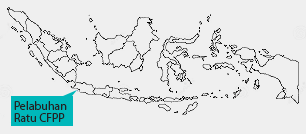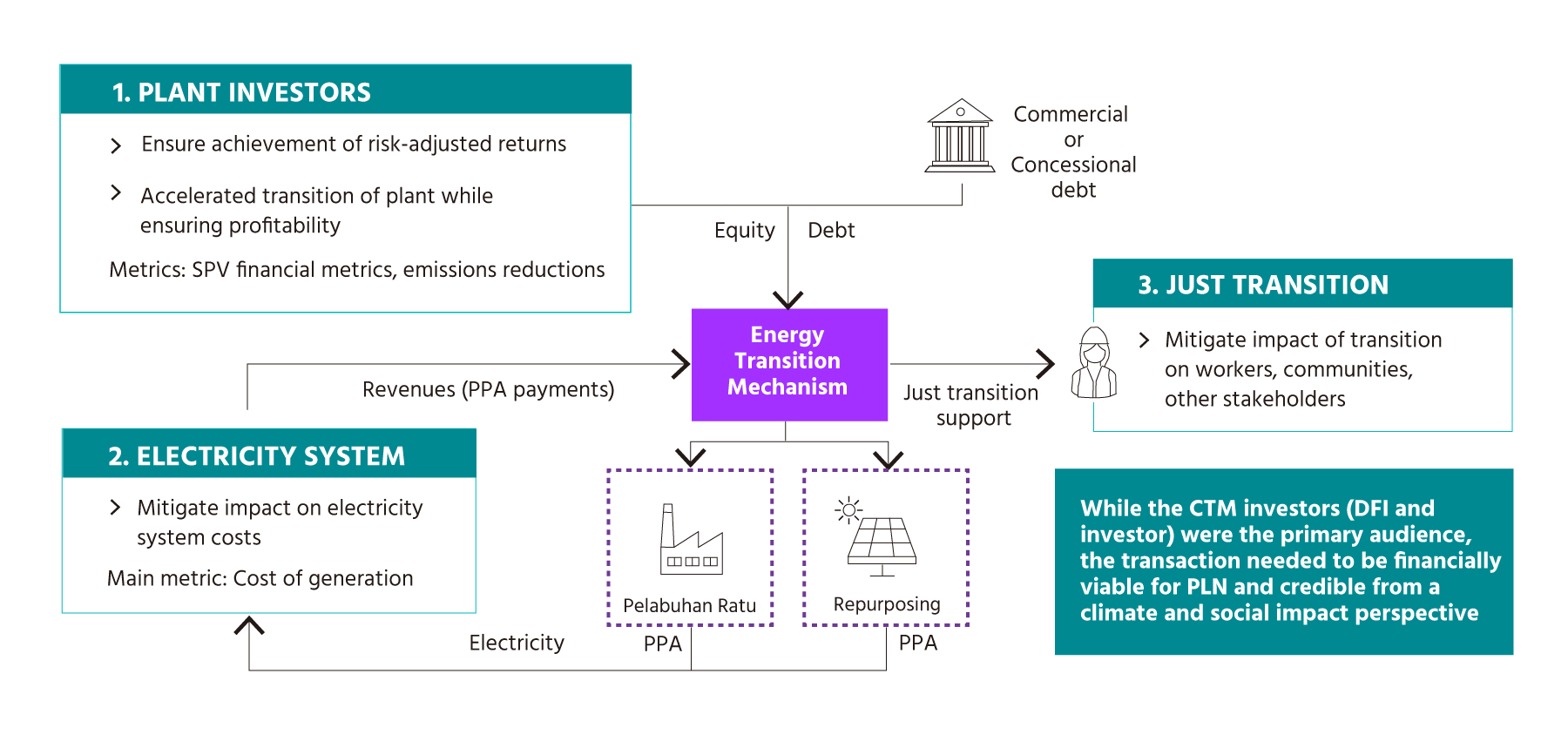Delivered by: RMI
Beneficiary: Pelabuhan Ratu Coal Fired Power Plant
Country: Indonesia
Challenge
In October 2022, ahead of Indonesia’s Just Energy Transition Partnership (JETP) announcement, PT PLN—Indonesia’s state-owned electric utility—and PT Bukit Asam (PTBA)—a state-owned mining company—announced a partnership to target the accelerated transition of the Pelabuhan Ratu coal-fired power plant. The 1050 MW plant, that achieved commercial operations in 2013, would be one of the first coal transition projects under Indonesia’s Energy Transition Mechanism (ETM) Country Platform, representing an important opportunity to demonstrate proof-of-concept and secure an early win to provide momentum to further ETM and JETP implementation.
The key objectives for Pelabuhan Ratu’s transition are:
- Pelabuhan Ratu is demonstrated as an early real-world example of feasible financial mechanisms for coal transition.
- Through the Pelabuhan Ratu transaction, financing is mobilised from both the public and private sector to supported accelerated retirement and repurposing, reducing the life of operating coal plants by at least 7 years or more. This would result in the plant being retired early in 2037.
Design: CFPP Repurposing Financial Analysis

Designing options for a coal mechanism (CTM) that could incentivise decison makers to accelerate repurposing or retirement of a coal plant, considering the local system, social-economic and political context.
FINANCIAL

Coal transitions mechanisms options design

Financial analysis of the coal transitions options
SOCIO ECONOMIC CONSIDERATIONS

Social considerations
of the CTMs
Geography: Indonesia

Project Objective: Evaluate the benefits of repurposing a CFPP asset to a clean energy alternative.
Approach: RMI conducted a multi-scenario, asset-level analysis of the profitability, emissions savings, and electricity system cost impacts in different transition scenarios.
Project Details: Pelabuhan Ratu
1050 MW
2013 COD
2037 RETIRE
Stage in Coal Transition Journey
1. Scope
2. Design
3. Deploy
CATA Support
In Nov 2022, RMI signed a memorandum of understanding (MOU) with Indonesia ETM country platform manager. As part of this partnership, RMI was scoped to provide technical assistance to assess different coal transition options for PBR.
- The project supports CATA’s strategic aims to reduce emissions through the scale-up of coal transition mechanisms and clean energy, through:
- CTMs piloted at plant level in key geographies
- Key decision makers employ strategic approach into accelerating CTM deployment
- Global network of experts and active knowledge hub supporting CTM deployment
Design: CFPP Repurposing Financial Analysis
To assist the CTM investors, RMI provided asset-level modelling to deliver an analysis on the financial, technical, and climate aspects of different repurposing options for Pelabuhan Ratu (PBR).


Impact
- The analysis focused on four accelerated retirement and repurposing scenarios, with the outcome being a recommendation that the CTM investors further explore the practical feasibility of clean energy repurposing of the PBR site. Further, the analysis also emphasised:
- Early retirement of PBR results in a financially feasible retirement scenario for stakeholders, but blended financing is necessary to ensure electricity costs do not increase due to the transition.
- Repurposing the site with solar PV and battery storage can provide additional value to investors and emissions reductions, but may be constrained by land availability.
- Co-firing of biomass at PBR is only profitable under the most favorable cost conditions—and will face additional climate and sustainability scrutiny. The additional capital investments to retrofit PBR generally outweigh cost savings.
- Additional innovative repurposing options could emerge if the regulatory framework recognises alternative opportunities for generating value.
- RMI’s analysis helped PBR’s decision-making process in key strategic areas
- Logical, analytically-grounded recommendations supported clean energy repurposing over other options, such as biomass co-firing.
- Integration of analysis with system dispatch demonstrated the importance of clean energy replacement in achieving emissions reductions.
- Inclusion of just transition costs within the analysis elevated the need to consider and price in support for workers and communities in CTM design.
- Overall key conclusions and lessons learned:
- Technical assistance opportunities: RMI’s analysis of Pelabuhan Ratu can help provide relevant stakeholders with a strong suite of financial and technical options for transitioning. Positive reception from CATA partners to RMI’s analysis positions us to possibly explore further technical analysis opportunities with them. These technical analyses are strategic opportunities for RMI to continue to build trust and credibility in these relationships, while formulating and delivering materials that can aid in wider energy transition discussions (e.g., on the viability of biomass co-firing). As opportunities for this work continue to emerge, RMI looks forward to active development of its role as a technical thought-partner to key stakeholders in the region.
- Sharing of insights with wider audiences: Given the high levels of confidentiality that typically surround these technical assistance opportunities, direct engagements will inevitably have limitations around how widely the results can be shared. There may be a role for CATA in bringing together entities involved in pilot analyses to share lessons on challenges and opportunities, and to think through together how those lessons learned under NDA can still be elucidated in a public-facing manner for the relevant broader communities.
- Local context and partner development: Furthering CATA’s understanding of project-specific local context is critical to the continued refinement of RMI’s analytical offerings. Additionally, many of these TA opportunities may bring with them the potential for mismatched stakeholder incentives and goals. Aligning these stakeholders with the most mission-critical priorities is necessary to effective project implementation. More active partnering with local organisations (e.g., in-region NGO’s, CSO’s) on future technical assistance opportunities could prove extremely valuable for increasing the thoroughness of our project work, while at the same time assisting in our coalition and capacity-building efforts in the region.